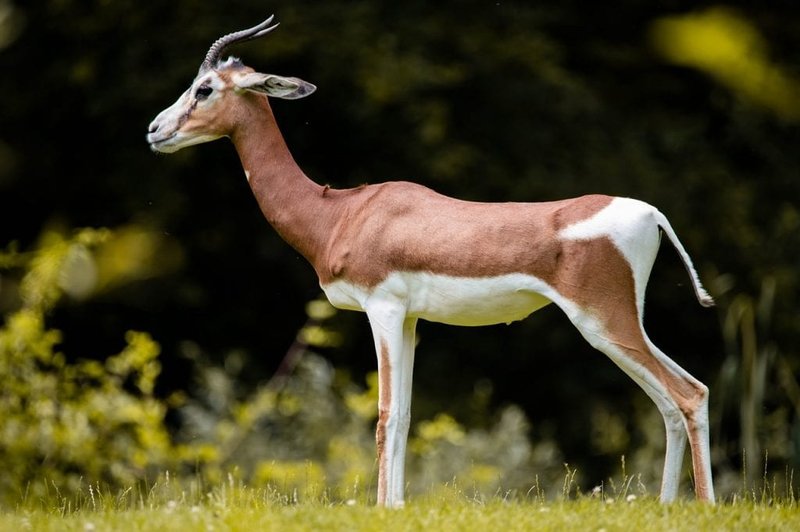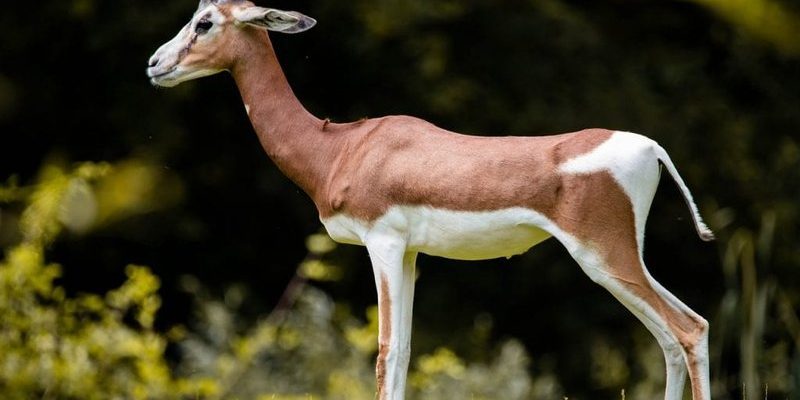
You might be wondering what sets different species of antelope apart, or what makes them so unique in the animal kingdom. Think of antelopes as the ballet dancers of the wild—graceful, swift, and always aware of their surroundings. In this article, we’ll dive into ten captivating facts about antelopes that reveal their amazing adaptations, behaviors, and roles in the ecosystem.
1. A Diverse Family
Antelopes belong to the family Bovidae, which includes a variety of species. There are over 90 species of antelope, ranging from the tiny Royal Antelope, standing about 10 to 12 inches tall, to the massive Elk, which can weigh over 800 pounds. Each species has adapted to fit its unique environment, whether it be grasslands, mountains, or even deserts.
Antelopes are found primarily in Africa, but some species inhabit parts of Asia. For instance, the Arabian Oryx thrives in the arid desert regions of the Arabian Peninsula. Picture this: just like how you dress differently for a summer day versus a winter one, antelopes have adapted their bodies and behaviors to suit their specific habitats.
2. Speed Demons of the Wild
One of the most amazing traits of antelopes is their incredible speed. Many species can run at speeds exceeding 40 miles per hour! The Thomson’s Gazelle, for example, can reach up to 50 miles per hour in short bursts. To put this in perspective, that’s faster than most cars in a residential area!
This speed is a crucial survival adaptation. Antelopes often rely on their sprinting ability to escape predators like lions and cheetahs. Imagine being chased but having the advantage of speed; it’s like being in a game of tag where you know the safest spots to dart to. Their quick movements and agile turns help them evade capture in the wild.
3. Unique Social Structures
Antelopes exhibit fascinating social behaviors. Depending on the species, you might find them living in small family groups, pairs, or even large herds. For example, the Impala often forms large herds of up to 100 individuals during the rainy season, which not only helps in spotting predators but also creates a lively social dynamic.
In contrast, the Duiker tends to be more solitary, preferring to roam alone or in pairs. These differences in social structures can often be compared to how we humans prefer to gather for a party or enjoy some quiet time alone. Antelopes communicate through body language and vocalizations, showcasing their own unique ‘language’ in the animal kingdom.
4. The Antelope’s Diet
Antelopes are herbivores, meaning they primarily eat plants. They have specially adapted teeth that help them graze on grass, browse on leaves, and even strip bark from trees. Different species have different dietary preferences based on their habitats. For instance, the Kudu loves munching on leaves and branches, while the Springbok grazes mostly on grass.
Here’s the thing: Just like we might crave a salad one day and pizza the next, antelopes have varied diets that help them survive in their environments. Their grazing habits also play a vital role in maintaining the ecosystem by promoting new plant growth and influencing the landscape.
5. Remarkable Adaptations
Antelopes are built to survive, and this is evident in their physical adaptations. Many species have long legs, which allow for swift running and leaping. The Gazelle, for example, can leap up to 10 feet high and cover distances of up to 30 feet in one bound. That’s like jumping the length of a small car!
Additionally, some antelopes have unique features like large ears or a keen sense of smell. The Oryx has long, straight horns that not only help fend off predators but also regulate its body temperature in hot climates. Just imagine how useful it would be to have such remarkable tools at your disposal!
6. Mating Rituals and Competitions
When it comes to courting, antelopes have some creative behaviors. Male antelopes often engage in displays of strength and agility to attract females. This can involve jumping high, running fast, or even sparring with other males using their horns.
In some species, like the Topi, males establish territories during the breeding season and compete for the attention of females. Their ritualistic behaviors can remind you of a dance-off; the better dancer wins! It’s not just about looks; fitness and agility during these displays play a crucial part in attracting mates.
7. Lifespan and Growth
The lifespan of an antelope varies significantly across species. On average, antelopes can live anywhere from 10 to 20 years in the wild, though some can live longer in captivity. For example, a Grant’s Gazelle may typically live around 12 years in the wild, while some can reach around 20 years in a protected environment.
Young antelopes, called calves, are usually born after a gestation period of around 7 months. They can stand and run soon after birth, a vital adaptation for survival. Just think about how important it is for a baby antelope to be able to escape from predators right away—nature has a clever way of ensuring their survival from day one.
8. Conservation Challenges
Unfortunately, many antelope species are facing threats. Habitat loss due to farming, development, and climate change poses significant risks. Some species, like the Saiga Antelope, have seen drastic declines due to poaching and disease.
Conservation efforts are critical for protecting these incredible animals. Organizations around the world are working to preserve their habitats and create awareness about their plight. Picture it like supporting a friend through tough times; together, we can help ensure a brighter future for these majestic creatures.
9. Cultural Significance
In various cultures, antelopes hold significant symbolism. They appear in art, folklore, and traditions around the world. For example, in some African cultures, the antelope symbolizes grace and speed, often featured in stories and dances. Their influence stretches beyond nature, resonating deeply with human creativity.
Understanding their cultural impact helps us appreciate them even more. Just like how a beloved movie can inspire generations, antelopes inspire art, stories, and community connections.
10. Why We Should Care
Antelopes are more than just mesmerizing animals; they play a crucial role in their ecosystems. As grazers, they help maintain the balance of grasslands and forests, which provides habitat for countless other species. Protecting antelopes also means preserving their habitats for future generations.
Here’s the thing: every creature, no matter how small or seemingly insignificant, has a role to play in the intricate web of life. By caring for antelopes, we’re also caring for the environment and biodiversity as a whole. It’s an essential step toward ensuring a healthy planet for everyone.
In conclusion, antelopes are fascinating creatures that deserve our attention and respect. From their unique adaptations to their social structures, there’s so much to learn from them. So next time you catch a glimpse of one grazing gracefully across the plains, take a moment to appreciate all that they are and all that they contribute to our world.

